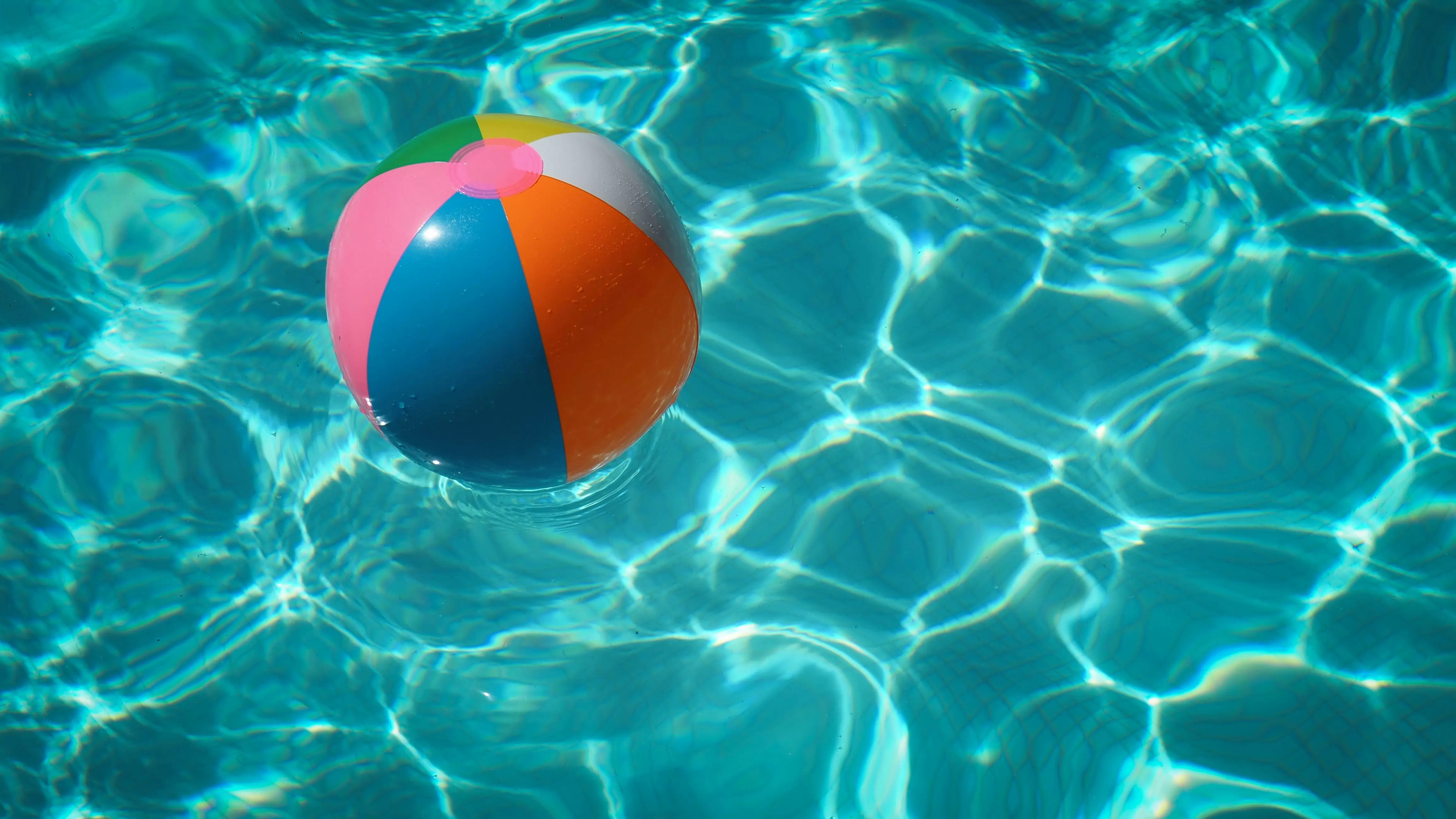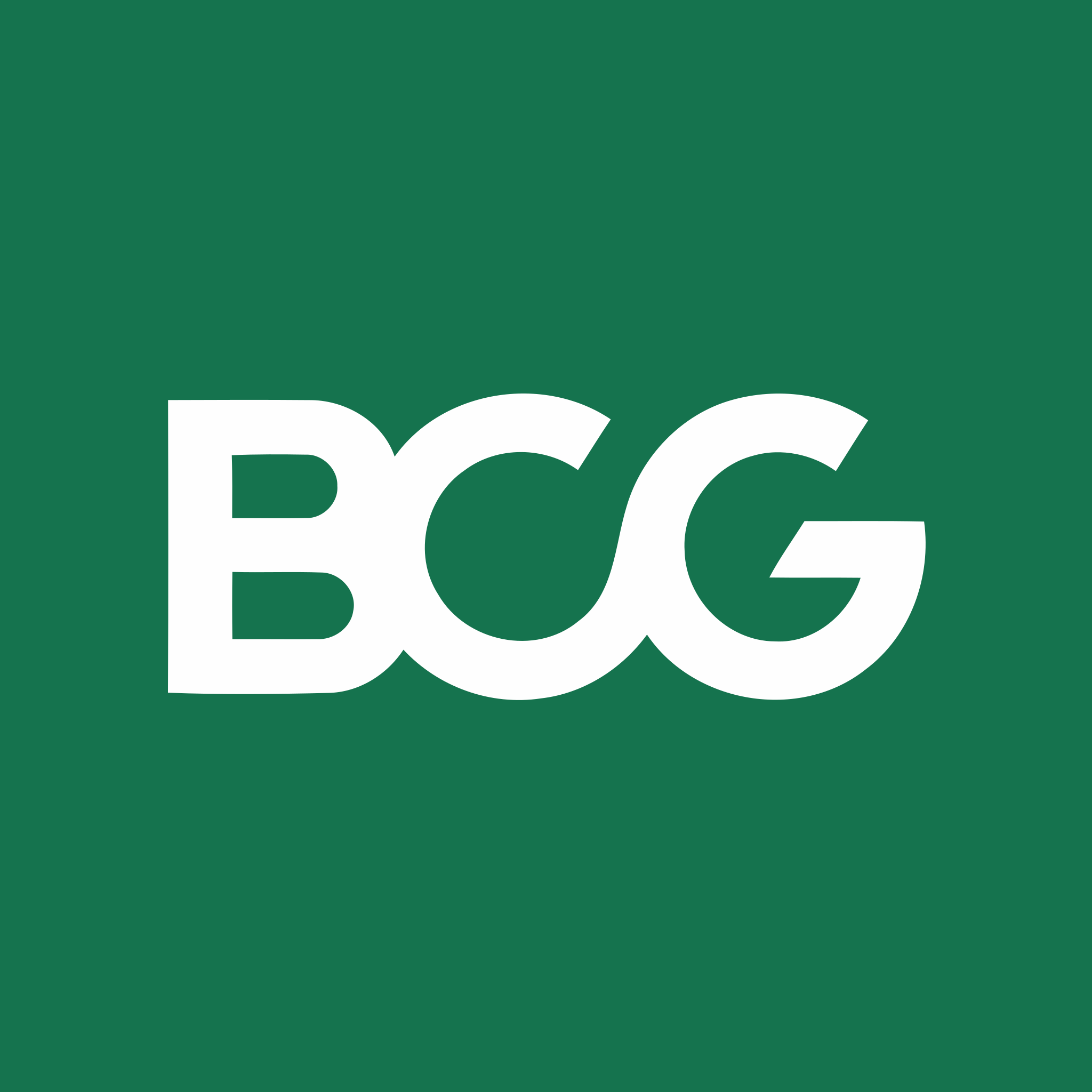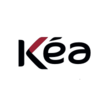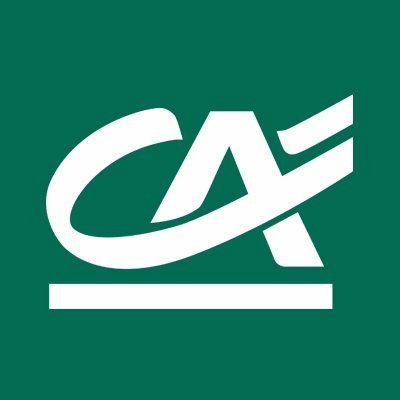Detailed content of our market study
 Inforamtion
Inforamtion
- Number of pages : 35 pages
- Format : Digital and PDF versions
- Last update :
 Summary and extracts
Summary and extracts
1 Market Overview
1.1 Definition and scope of the study
The swimming pool market includes all activities related to the design, construction, installation, sale, and maintenance of swimming pools, both public and private. Encompassing a wide range of products (in-ground, above-ground, prefabricated, natural, custom-made) and services (covers, lighting, heating, filtration, wellness accessories), it caters to private (homes, condominiums) and commercial (hotels, sports facilities, spas, spa facilities) customers. The sector also involves distribution of ancillary products, after-sales service, and related activities, such as rental or temporary sharing via digital platforms.
Globally, the market was worth $7.58 billion in 2023 and will reach $13.9 billion by 2030 (+83%, high CAGR), driven by increasing demand for residential pools and the enhancement of outdoor spaces. In Europe, growth is smaller (+24.9%), from $4.14 billion to $5.17 billion over the same period, with France, Spain, and Germany as leaders. Italy is Europe's fourth largest market by value, with a steadily expanding sector: the number of swimming pools will increase from 156,000 in 2023 to 168,832 in 2026 (+8.2%). The market value in Italy was estimated at €1.2 billion in 2022 (+22% compared to 2019), with demand boosted by improved quality of home life and a favorable climate.
The market structure is articulated: companies specializing in design, construction, installation, renovation, and maintenance operate there. The main players are Piscine Castiglione (€108M), Alce (€7.9M), Intex (€27.2M) and Piscine Laghetto (€11.5M). Companies active in swimming pool management alone (ATECO 93.11.2) grew from 551 (2017) to 659 (2023, +19.6 percent), with about 3,000 employees and a prevalence of S.r.l. as the legal form (over 66 percent).
The offer is wide and differentiated: above-ground pools from €99, in-ground steel or concrete pools between €12,500 and €21,900, natural pools from €700-900/m². Total expenses can exceed 300% of the initial price for accessories, heating, filtration or design. Annual maintenance costs are around €1,000, with systems becoming increasingly environmentally friendly and cost-saving with efficient filters, solar covers, and LED lighting.
Demand shows strong seasonality, with summer peaks and strong regional roots (Veneto, Umbria, Tuscany, Lombardy). 88.8% of Italian households have an outdoor space and 29% practice swimming, making Italy a market with high potential. New trends include prefabricated pools, sustainable solutions (chlorine-free), aesthetic customizations, and smart tools for automated management.
From a regulatory perspective, pool construction is subject to local building codes, while technical characteristics are regulated by specific UNI EN standards for safety, filtration and water systems. The market is also distinguished by digital initiatives such as Fingerpools, which enables temporary sharing of private pools, and by ongoing innovations in enclosures and sustainability.
1.2 The world market
the global swimming pool market is showing steady and promising growth, fueled by increasing demand in both the residential and commercial sectors. The market is expected to reach $**.* billion by ****, up from $*.** billion in ****, with a significant compound annual growth rate (***). This represents an ** percent increase from ****. Key drivers include the growing preference for private recreational spaces, such as in-ground and above-ground pools, especially in the residential sector, which is seeing increased investment, especially in regions such as North America, which accounts for nearly ** percent of the global market. In the commercial sector, the expansion of pools in hotels, resorts, and theme parks is contributing greatly to this growth, with strong demand for innovative and customized designs. Value of the Global Pool Market Mondo,****-****,Miliardi Market Intelligence ; Tech Navio
The U.S. Market The United States is a leader in the swimming pool market. In ****, there are **.* million private swimming pools in the country, * times more than France, which ranks second in the world swimming pool market. If you include the ***,*** public pools in the United States, that comes to * pool for every ** inhabitants.[***] However, swimming pools in the United States are far from evenly distributed across the country. Most ...
1.3 The European market
The European pool and spa market has been estimated at US$*.** billion in **** and is expected to grow at a sustained rate with a CAGR (***) of* percent between **** and ****. Technological innovations are transforming this industry, making pools and spas increasingly practical and efficient. One example of technology investment in the sector is the initiative of Fluidra, a global leader in pool equipment and wellness solutions. In March ****, Fluidra launched Fluidra Ventures, a US$** million corporate venture capital fund designed to accelerate technological innovation in the industry. Fluidra Ventures aims to support startups and emerging companies that develop innovative and transformative solutions for pools and spas, aiming to create cutting-edge technologies that further improve efficiency, sustainability, and safety. This fund will enable Fluidra to partner with companies that come up with major innovations, such as new filtration systems, advanced automation solutions, and energy-saving technologies, keeping the company competitive and positioned at the top of the industry.[***]
European swimming pool market value Europe, ****-****, in billions of dollars (***) GMI
1.4 The Italian market
The Italian swimming pool market has experienced significant growth in recent years, with an estimated value of about *.* billion euros in ****. This figure shows a ** percent increase over ****, despite the difficulties caused by the pandemic. During this period, interest in private pools has grown, driven by the desire to improve the quality of home life and the increased focus on wellness.
The growth forecast for the number of swimming pools in Italy between **** and **** is shown below. In ****, the number of swimming pools is estimated to reach ***,***, with an increase bringing this figure to ***,*** by ****, for an overall growth of *.* percent in four years. A moderate but steady increase is observed each year: ***,*** pools are planned for **** and ***,*** for ****, a sign of continued expansion in the sector. The swimming pool market in Italy thus shows a progressive growth dynamic, in line with what is observed in other European regions, but at a slightly faster pace than the growth of the overall market value in Europe.
Forecast Growth in the number of Swimming Pools in Italy Italia,****-****,Migliaia Vannini Water and Pools
1.5 Imports and Exports
The United Nations Comtrade database allows tracking of global trade flows of many goods.
Pool trade is recorded under the following code :
**** : Articles and equipment for general exercise, gymnastics, athletics, other sports (***) or outdoor games, not specified or included elsewhere in this chapter; swimming pools and paddling pools
The data therefore include other items and equipment, but give an overview of the swimming pool trade.
Italy is a historical exporter of these types of goods, as shown in the chart below :
Imports and exports recorded under code '****' Italy, ****-****, in millions of dollars UN Comtrade
The United States and France are the main suppliers, with a value of $**.** million each, followed by Germany at $**.** million. Spain and the United Kingdom stand at $**.** million and $**.** million, respectively, while the Netherlands, Austria, Switzerland and the United Arab Emirates provide imports ranging from $**.** million to $**.** million. Japan, with **.** million, closes the ranking of the main countries of origin of imports in this sector. These figures highlight Italy's heavy dependence on European countries and the U.S. for the supply of theseproducts.
Origin of imports of products under code '****' Italy, ****, in % Source: ****
China is the main destination market, with a ...
2 Demand analysis
2.1 Determinants of demand for private swimming pools
**% of Italians own at least one cacsa. Outdoor living spaces are quite common in Italy, even in cities. In fact, **.*% of households have a garden, terrace or balcony. This phenomenon is fairly evenly distributed geographically ; Piedmont has the highest prevalence of outdoor residential spaces (***)
Residences with outdoor living space by region Italy, ****, in % ISTAT
A significant though not exorbitant portion of the population in Italy knows how to swim, which means that the potential use of swimming pools in Italy is high.
Percentage of Italians who can swim Italy, ****, in % Science Journalism Agency
Here are data on the most popular sports practices in Italy in ****, expressed as a percentage of the practicing population. Soccer is confirmed as the most popular sport, with a ** percent share, followed by swimming (***), indicating a prevalence of traditional and team sports over individual or wellness-related
Most Widespread Sports Practices Italy, ****, as a percentage UISP
2.2 Seasonal demand
it is clear that online interest in the term "swimming pools" in Italy between **** and **** follows a marked seasonal trend. After stable and relatively low values (***) as early as mid-September and remaining stable throughout the fall and winter. Low but slightly rising values are observed in the early months of ****, up to an index of ** in mid-April, signaling the approach of the summer season.
Google searches for "backyard pool" Italy, ****-****, Google Trends Index Google Trends
Veneto is clearly at the top of the ranking with an index of ***, followed by Umbria with ** and Liguria with **. Relatively high values are also recorded in Sardinia (***).
Veneto *** Umbria ** Liguria ** Sardinia ** Tuscany ** Lombardy ** Emilia-Romagna ** Piedmont ** Sicily ** Latium ** Campania ** Apulia ** Marche ** Friuli-Venezia Giulia ** Aosta Valley ** Trentino-Alto Adige ** Abruzzo ** Molise ** Calabria ** Basilicata **
2.3 Rising temperatures as a positive factor for demand
Analyzing the average monthly temperatures between **** and ****, it is possible to see a long-term growth in the value of anomalies compared to the ****-**** average. In particular, excluding ****, in the last ** years the average temperature in Italy has been increasing anomaly with respect to climate normals, with the record recorded in **** of +*.** degrees on an annual basis with respect to the average. Rising average temperatures, particularly in the summer months, can be a positive factor for pool demand.
Average temperature anomaly compared to climate normals ****-**** Italy, ****-****, C° Inspire
2.4 Latest demand trends
The picture emerging from the Italian private swimming pool sector offers many perspectives. Among the innovations that have revolutionized the sector in recent years are : prefabricated pools, which are more affordable and just as high-performing in terms of quality; cantilever/suspended pools, which are impressive constructions from a structural point of view, as they are made with the illusion of swimming in an unlimited expanse of water; easier to build and equally popular are in-house pools, which can be customized in every detail. These are structures that fit perfectly into various home environments, even when space is limited.
Italians' attention is also turning to green solutions, which save on energy consumption while preserving the environment. the introduction of environmentally sustainable swimming pools is on the rise, which has led to a reduction in consumption and pollution. When it comes to sustainability in swimming pools, the main innovation is the chlorine-free pool, which is good for both the environment and the people swimming. Designed with advanced technology, this type of pool uses hydrolysis and ionization processes to make the water healthy and clean, avoiding the contamination of disinfectant chemicals.
Custom pools are also very successful. This is mainly due to the lower ...
3 Market structure
3.1 Market value chain overview
The diagram below illustrates the chain of actors involved in the pool installation process in Italy.
3.2 Services offered and market players
There are different types of actors depending on the work required in the pool market. In this market, we find the following services (***):
Pool design Pool construction Pool renovation Pool deck design and construction Pool liner replacement Sauna installation Spa/jacuzzi installation Pool covers Pool lighting installation Installation of above ground pools Sauna repair
The market is quite segmented ; there are companies that design pools, others that build them, and others that install them. There are also players who customize pools, and who sell and install various types of equipment (***).
The aforementioned Piscine Castiglione which is part of the A&T Europe Group is among the leading companies in termi of design, constructio, and installation of swimming pools in Italy. Piscine Laghetto, bought by Fluidra, one of the world's leading manufacturers of swimming pool equipment, is also one of the largest manufacturers and sellers of swimming pools in Italy (***).
There are niche players such as CentroItalia, which specializes in indoor pool design, or the P&C Group, which exclusively manufactures solar pool covers.
Below is a chart of some of the largest pool manufacturers in Italy.
the Italian swimming pool supplier market in **** is highly concentrated, with a clear leadership by ...
3.3 The market structure
In order to analyze the structure of the Italian market, activities dedicated to swimming pool management (***) are considered.
Number of enterprises
The evolution of the number of enterprises active in pool management in Italy from **** to **** is shown. The sector experienced an overall growth of **.* percent, from *** in **** to *** in ****. After a marked increase between **** and **** (***) and a slight stabilization in ****, followed by a sharp jump in ****, when the number of businesses rose to ***, registering a positive change of *.* percent from the previous year.
Enterprises active in swimming pool management Italy, ****-****, in number ISTAT
The number of employees of enterprises active in pool management in Italy changed significantly between **** and ****. There were *,*** employees in ****, which increased by *.* percent in **** to *,***. However, **** marked a significant contraction, down **.* percent from the previous year, bringing the total to *,*** employees. This reduction can be attributed not only to the indirect effects of the pandemic, but also to strong seasonality and reduced demand in the tourism and recreation sector. There was a slow recovery in subsequent years: in **** it reached *,*** (***) and in **** it rose to *,***, marking a *.* percent increase over the previous year, but still falling short of the **** peak levels.
Number of employees of ...
3.4 Geographical distribution of public swimming pools
Now analyzing the geographical distribution of facilities with swimming pools identified overall, we identify Tuscany and Sicily as the top two regions in terms of number of this type of facility, followed by Apulia and Lombardy. In particular: In Northern Italy, Lombardy boasts the highest number of facilities with swimming pools, with a total of ***. This is followed by Veneto with *** facilities and Trentino-Alto Adige with ***. The total number of facilities with swimming pools in Northern Italy thus reaches *,***. In Central Italy, Tuscany stands out with the highest number of facilities with swimming pools, with a total of ****. This is followed by Emilia-Romagna with *** facilities and Umbria with ***. The total number of facilities with swimming pools in Central Italy amounts to *,***. In Southern Italy and the Islands, Sicily has the largest number of facilities with swimming pools, with a total of *,***, followed by Puglia with *,*** facilities and Campania with ***. The total number of facilities with swimming pools in Southern Italy and the Islands reaches *,***. Region Value Piedmont *** Latium *** Abruzzo *** Molise ** Campania *** Apulia **** Basilicata ** Calabria *** Sicily **** Sardinia **** Trentino-Alto Adige/Südtirol *** Lombardy *** Valle d'Aosta/Vallée d'Aoste ** Veneto *** Friuli-Venezia Giulia *** Liguria *** Emilia-Romagna *** Tuscany **** Umbria *** Marche ***
4 Supply analysis
4.1 Type of the offer
There are many different types of swimming pools that can be classified according to their shape, technology, structure, materials used, etc. Below is a non-exhaustive list that includes the most common swimming pools in Italy. Types of swimming pools Semi-inground pool In-ground pool Outdoor swimming pool Indoor swimming pool Fiberglass pool Concrete swimming pool Square/rectangular/circular pool etc Customized swimming pool Indoor swimming pool Infinity pool Mirror pool Steel pool Natural pool (***)
The Agreement between the State and the Regions on "Sanitary and Hygienic Aspects for the Construction, Maintenance and Supervision of Swimming Pools for Swimming Use," dated January **, ****, classifies swimming pools for sanitary use based on *) destination *) environmental and structural characteristics *) use. Based on their intended use, swimming pools are in turn divided into:
A) swimming pools owned by the public or private sector and intended for public use
B) swimming pools intended exclusively for the residents of a residence, condominium, and their guests
(***) pools for special uses, including those located in health, rehabilitation, and spa facilities.
Type A
public swimming pools (***) community-use pools included in facilities used primarily for other activities (***) installations for water games
Type B
uncovered, one or more unconfined pools within permanently enclosed facilities indoor, ...
4.2 Prices
As we have seen above there is a very diverse range of swimming pools on offer, and so prices vary not only by geographic location but also by some of the factors mentioned above. In addition, costs increase with size. According to Assopiscine, the average size of a swimming pool is *x*x*.* meters. The table below shows the average price of different types of pools of this size.
There may be other costs associated with pools such as covers, cleaning materials, equipment and supplies, tiling work, adding diving boards or slides, lighting, filtration, heating, waves, etc. This can increase the cost of the final product to more than ***% of the initial pool price.[***]
To analyze prices related to swimming pools, the ECOICOP (***), they could fall into the following ECOICOP categories:
**.*.*: "Equipment for sports, camping, and outdoor recreation." This category includes goods such as inflatable or demountable swimming pools for domestic use. **.*.*: "Sports services." This category includes services related to access to and use of sports facilities.
Consumer price index in recreational and sports services
In the first months of ****, prices remain stable around ***, with a slight decline in April (***). From May, there is a sharp seasonal increase that brings ...
4.3 Pool maintenance and enclosures
The need for frequent pool maintenance
The maintenance of a swimming pool represents a cost and this sometimes hinders its purchase, especially for individuals who wish to install a pool in their backyard. Water quality should be checked two or three times a week, depending on the outdoor temperature, solar radiation, location, and frequency of pool use. For example, the pH of the water (***) should be between *.* and *.*. If the pH is too high, it can prevent chlorine from diffusing properly into the pool and cause skin intolerances. On the other hand, too low a pH can damage the metal parts of the pool through corrosion.
Disinfection of a pool, especially in private pools, by the use of chlorine remains the most common. Chlorine content should be between *.* and *.* milligrams per liter. If the chlorine content in a pool is too high, it can cause irritation to mucous membranes and eyes; an alternative solution can be found in bromine, although it is suspected of causing almost the same effects. The use of oxygen-based active agents (***), considered less polluting, is possible but their effect is slower.
(***)
High maintenance costs
A swimming pool represents a major expense for electricity (***). It is considered ...
4.4 Greener pools and pool sharing
Greener swimming pools
To meet customers' expectations of the ecological impact of swimming pools, the offerings are adapting. In fact, swimming pools have a negative image in this respect, in terms of water and energy consumption. Also, by making their offerings more eco-responsible, the cost of maintaining a pool decreases. Thus, since **** and the creation of FPP's Sustainable Development Commission, which works on the carbon footprint and water and energy consumption of swimming pools, the French market is much more environmentally friendly, as detailed by the organization during the **** press conference .
Pools no longer need to be emptied every year thanks to the techniques and materials used (***). Current renewal is estimated today at one-third of the total volume of water, which for a *x*-meter family pool represents **m * of water year-round. For comparison, annual water consumption related to a tap leak corresponds to **m * water and toilet use to **m * .
Advances in filtration systems have reduced their energy consumption by a factor of *.* over the past ** years. A filtration system that required **** watts of power and consumed **** Kwh per year in the ****s now requires only *** watts thanks to these advances, and thus consumes only *** Kwh per year.
In addition, ...
4.5 New and alternative services offered and building your own pool
Substitutes and new competitors
Industry suppliers offer all kinds of products in addition to classic outdoor pools: above-ground pools, saunas, spas, pool heaters, accessories, cleaning robots, etc.
Above-ground pools, which account for ** percent of all private pools, from entry-level to more sophisticated products, are a real drag on the growth of pool operators' business. For one thing, they are sold at a much lower price than higher-value in-ground pools, so they do not have a significant impact on the income of pool operators. Also, they do not require a special installation phase carried out by a pool specialist and can be sold in non-specialized distribution channels [***]
Maintenance contract bidding trend
Faced with the complexity of pool maintenance and the assiduity it requires, pool market players are increasingly offering multi-year maintenance contracts that make it an additional and recurring source of income.
Increasing trend in pool staging
Pool staging refers to all categories of pool renovation: identical replacement of worn parts and equipment, equipment improvement, aesthetic renovation, and total pool refurbishment. This segment has increased significantly in Italy in recent years due to the wear and tear of many pools in the country.
New products: connected equipment
We are seeing a multiplication ...
5 Regulations
5.1 World Harmonized Customs System
The Harmonized System is an international nomenclature for the classification of goods. It allows participating countries to classify traded goods on a common basis for customs purposes. At the international level, the Harmonized System (***) for the classification of goods is a six-digit [***] code system.
The HS contains about *,*** item/product descriptions that appear as titles and subtitles, divided into ** chapters, grouped into ** sections. The six figures can be divided into three parts. The first two digits (***).
The Harmonized System was introduced in **** and has been adopted by most countries in the world. It has undergone several changes in product classification. These changes are called revisions and came into effect in ****, ****, ****, **** and ****. Detailed changes in each HS nomenclature are available on the links below.
To compile foreign trade statistics for this study, we selected the following field: "**.** equipment for gymnastics, athletics, other sports (***) or outdoor games not already mentioned in another field, swimming pools and paddling pools."
5.2 National regulations
Standards of private swimming pools in Italy
Between the end of **** and the beginning of ****, work was completed on the revision of the technical standards related to the private swimming pool sector, which were already present in the European extra-legislative landscape; in detail, the standards that were revised and published, making them enter into force on October **, **** (***) are as follows:
*. UNI EN *****-*:**** - Domestic swimming pools - General requirements including safety and test methods. The standard specifies general safety and quality requirements and test methods for domestic swimming pools. These requirements and test methods are applicable to in-ground, above-ground or in-ground swimming pool structures, including their installation and means of access. *. UNI EN *****-*:**** - Domestic swimming pools - Specific requirements including safety and test methods for in-ground swimming pools. The standard defines specific safety and quality requirements and test methods for partially or totally in-ground domestic swimming pools in addition to the general requirements defined in EN *****-* and should be read in conjunction with it. *. UNI EN *****-*:**** - Domestic swimming pools - Part *: Specific requirements including safety and quality requirements and test methods for above-ground swimming pools. This standard defines specific safety and quality requirements and ...
6 Positioning of actors
6.1 Segmentation
- Piscine Castiglione
- Vannini Acqua & Pool
- Ecoimpiantisti Piscine
- Intex
- Alce
- Piscine Solaris
- Gramaglia Piscine
All our studies are available online in PDF format
Take a look at an example of our research on another market!
 Choosing this study means :
Choosing this study means :
Access to more than 35 hours of work
Our studies are the result of over 35 hours of research and analysis. Using our studies allows you to devote more time and added value to your projects.
Benefit from 6 years' experience and over 1,500 industry reports already produced
Our expertise enables us to produce comprehensive studies in all sectors, including niche and emerging markets.
Our know-how and methodology enable us to produce reports that offer unique value for money.
Access to several thousand articles and paid-for data
Businesscoot has access to all the paid economic press as well as exclusive databases to carry out its market research (over 30,000 articles and private sources).
To enhance our research, our analysts also use web indicators (semrush, trends, etc.) to identify market trends and company strategies. (Consult our paying sources)
Guaranteed support after your purchase
A team dedicated to after-sales service, to guarantee you a high level of satisfaction. +44 238 097 0676
A digital format designed for our users
Not only do you have access to a PDF, but also to a digital version designed for our customers. This version gives you access to sources, data in Excel format and graphics. The content of the study can therefore be easily retrieved and adapted for your specific needs.
 Our offers :
Our offers :
the pool market | Italy
- What are the figures on the size and growth of the market?
- What is driving the growth of the market and its evolution?
- What is the positioning of companies in the value chain?
- Data from several dozen databases
5 reports pack (-15%) IT Italy
- 5 reports at €75.6 excluding VAT per study to choose from our Italian catalogue for 12 months
- Save 15% on additional studies purchased
- Choose to be refunded any unused credit at the end of the 12-month period (duration of the pack)
See the terms and conditions of the pack and the refund of unused credit.















